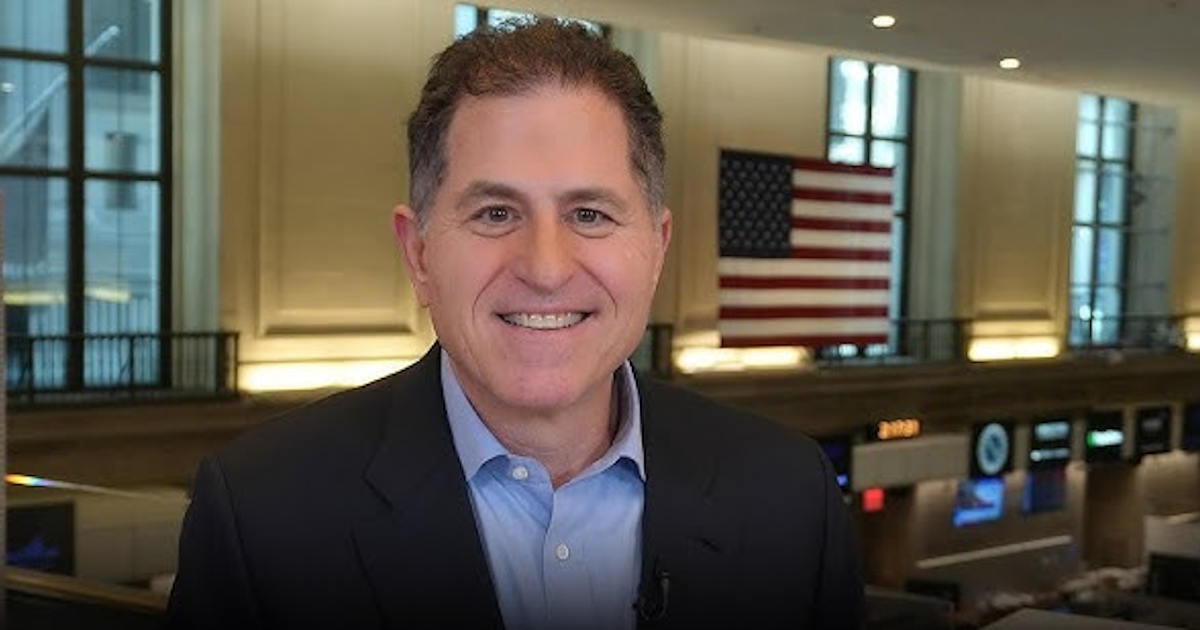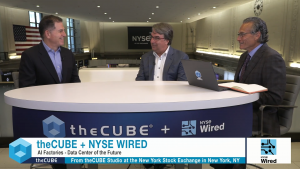 AI
AI
 AI
AI
 AI
AI
AI factories are redefining how intelligence is built, deployed and scaled across the modern economy. These purpose-built systems are becoming the foundation of digital progress, transforming data centers into production lines for machine learning, automation and decision-making at unprecedented speed.
Across industries, companies are investing billions to construct these next-generation facilities that merge data, compute power and human expertise into a unified engine of innovation. From sovereign AI initiatives to enterprise transformation and edge-based intelligence, AI factories are driving a structural shift in how value is created, measured and delivered in the age of intelligent infrastructure.

CEO Michael Dell talks with theCUBE’s John Furrier and Dave Vellante about the future of AI factories.
“Data is becoming more valuable because it’s the fuel for these AI factories,” said Michael Dell (pictured), founder, chairman and chief executive officer of Dell Technologies Inc. “The demand for compute is … insatiable. We don’t see any slowdown in that demand, and for us, it’s coming from not just the tier-two CSPs. It’s coming from sovereign AI; it’s coming from enterprise AI. I think we’re still in the early stages of the S-curve adoption of how this is being used inside companies.”
Dell spoke with theCUBE Research’s John Furrier and Dave Vellante at theCUBE + NYSE Wired: AI Factories – Data Centers of the Future event series, during an exclusive broadcast on theCUBE, SiliconANGLE Media’s livestreaming studio. They discussed how AI factories are transforming compute, power demand and enterprise strategy across industries.
The AI revolution isn’t slowing down — it’s speeding up. At the center of this momentum lies a new class of infrastructure purpose-built for machine intelligence. These AI factories combine GPUs, advanced cooling and orchestration to meet an explosion of token usage, multimodal models and agentic systems. As businesses adapt, the technology is evolving faster than power grids can supply.
“Customers are deploying and using the capacity that we provide them instantaneously upon delivery, and they want it as fast as they can get it,” Dell said. “They’re usually gated by power availability to the building, and I think that could continue to be a constraint for a long time to come because it takes time to build all the power generation capacity.”
Every corner of the digital economy — from sovereign systems to enterprises and CSPs — is investing in AI factories to stay ahead. The early winners are those that anticipated the GPU surge and acted early. The engineering complexity behind systems such as Dell’s GB200 and GB300 shows that agility and foresight are now the competitive edge, according to Dell.
“We started hearing about the demand for these GPU servers, and we kicked into gear and started designing the original H100 systems,” he said. “We were first to deliver the GB200 at scale; now first to deliver the GB300. The engineering effort required to deliver these kinds of systems is getting much more complicated.”
The transformation isn’t limited to hyperscale environments. Edge intelligence is emerging as a new frontier — bringing model reasoning closer to the data source. Small, powerful devices, even the size of a fire alarm, are becoming miniature AI factory nodes. They process and infer locally, creating a distributed web of intelligence across industries from manufacturing to robotics, Dell explained.
“The key point is that the intelligence is going to go where the data is,” he said. “If you can shrink the model and the system to be something that’s super small and it’s in a robot … anything that has electrons passing through it … as there’s data created, it somehow enhances the experience. At the right cost and value equation, you’re going to go do that.”
As intelligence moves closer to the edge, the same shift is happening inside organizations. They’re discovering that scaling AI requires more than advanced hardware — it demands a fundamental redesign of how their systems and structures operate. Organizations are realizing that they can’t simply plug AI into existing structures. Instead, they must reimagine processes, simplify operations and integrate data pipelines that support intelligent automation. The architecture of work itself is changing, demanding creativity and a willingness to rethink what the enterprise can be in a cognitive economy, Dell pointed out.
“What we’ve learned is that if you just look for an AI thing to plug into your company, you’ll probably fail,” he said. “There’s a lot more fundamental work that has to be done. Simplify, standardize the processes, get all the data together and then let’s apply the AI models.”
As more companies make the leap, two paths are emerging — retrofitting existing systems and building AI-native platforms from the ground up. Both are valid, but the latter is accelerating at unprecedented speed. With generative tools now capable of producing code through simple language prompts, innovation cycles are compressing and new software layers are emerging faster than ever before, according to Dell.
“You can create more code; it’s easier to do. You don’t necessarily have to speak code; you can just speak English now that you have code,” Dell said. “That’s a game changer in terms of how does a company actually have technology that helps it achieve what it wants to achieve.”
AI factories symbolize more than data centers — they embody a philosophical and economic shift toward machine-augmented intelligence. The next decade will see even greater disruption, as industries learn to design for adaptability rather than permanence. Those who embrace the model-driven future will gain the ultimate advantage: speed of thought, Dell emphasized.
“We’ve viewed this moment as a reset, and we’ve said, ‘What could our company actually be if we completely reimagined everything using this technology?’ That’s what we’re building, because that’s the company that’s going to succeed in the 2030s,” he said.
Here’s the complete video interview, part of SiliconANGLE’s and theCUBE’s coverage of theCUBE + NYSE Wired: AI Factories – Data Centers of the Future event series:
Support our mission to keep content open and free by engaging with theCUBE community. Join theCUBE’s Alumni Trust Network, where technology leaders connect, share intelligence and create opportunities.
Founded by tech visionaries John Furrier and Dave Vellante, SiliconANGLE Media has built a dynamic ecosystem of industry-leading digital media brands that reach 15+ million elite tech professionals. Our new proprietary theCUBE AI Video Cloud is breaking ground in audience interaction, leveraging theCUBEai.com neural network to help technology companies make data-driven decisions and stay at the forefront of industry conversations.